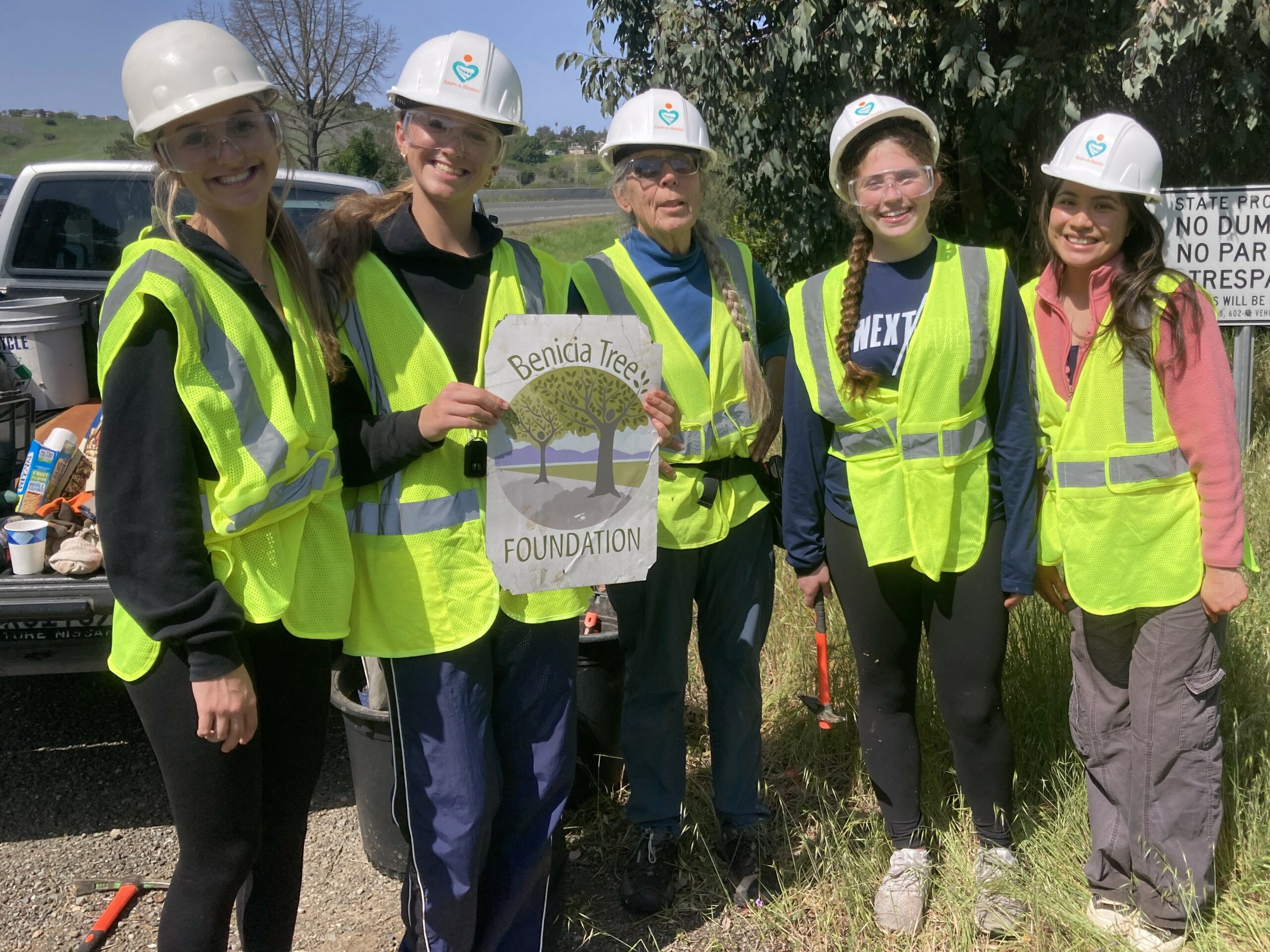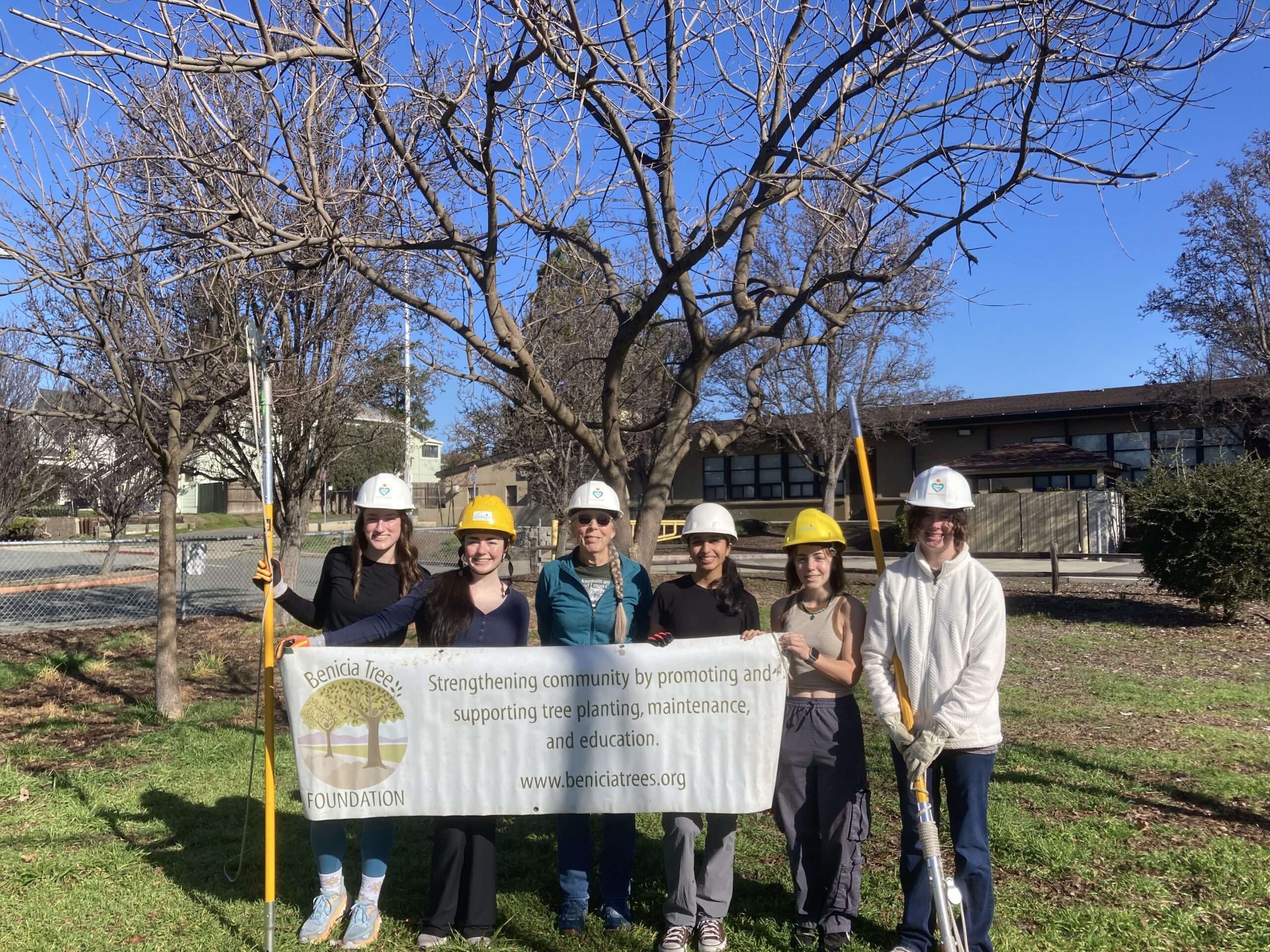By Donna Beth Weilenman
Staff Reporter
– The Benicia Herald
Benicia Tree Committee agreed Monday night with its staff adviser that the city’s tree fund should be spent cautiously.
“We’re in a budget crisis,” Mario Giuliani of the office of the director of Parks and Community Services told the panel.
The committee oversees the fund, which was established with $700,000 through the Valero Improvement Project-Good Neighbor Steering Committee Agreement settlement.
Among the cuts Benicia is making in its next budget cycle is to tree maintenance, Giuliani said. Tree maintenance will be kept in the budget structure as a line item, however, because in the future the city will have to earmark funds for the care of trees, he said.
In addition to its own cutbacks, Benicia lost $25,000 in funds for public education about trees when CAL FIRE withdrew a grant.
Cautious spending is keeping the city’s tree projects financed, Giuliani said.
“We’re rolling unspent money over to buy ourselves another budget cycle,” he told the panel.
Of the original allocation, $248,480 has been spent, Giuliani said.
In fiscal year 2009-10, $48,877.80 was spent on tree maintenance; $1,246.23 on work toward the Tree Inventory and Master Plan; $10,000 on tree planting; $4,039.74 on public education; and $81,000 on public assistance grants, which assist those who need help in maintaining, removing or replacing trees, such as the Benicia Unified School District’s effort to remove mistletoe infestation.
In fiscal year 2010-11, $520 was spent on tree maintenance; $40,405.60 on the Tree Inventory and Master Plan; $13,980 on tree planting; $4,355.07 on public education; and $44,056 on public assistance grants.
Committee member Steve Goetz questioned the $13,980 spent on planting trees during last October’s Arbor Day commemoration.
“The reason that is so high is irrigation,” Giuliani said. “That’s the most expensive part.” He explained that as the city continues to increase its tree population, “We can assume where we plant trees, there is no irrigation.”
However, he said, the city must start considering, “Are there better ways to get water to trees?”
Giuliani said Benicia’s medians at one time had irrigation infrastructure, but it was removed because of the expense of water meters. The meters, which had cost between $15,000 and $30,000 each, were turned in for credit because most of the medians’ landscaping was well-established and could survive without additional watering, he said.
However, when a median’s tree or other landscaping is removed, it isn’t replaced because there’s no way to provide the new planting with necessary water, he explained.
Wolfram Alderson, executive director of the Benicia Tree Foundation, suggested the city look into purchasing a water trailer for mobile irrigation, and offered to check prices on the equipment.
“A water trailer has worked in other communities, and you get deep watering,” he said.
In the future, tree plantings for Arbor Day, Tree City certification and other events will be guided by the city’s Tree Master Plan, which should be ready for the committee to review at its Aug. 22 meeting.
Goetz suggested the committee re-examine the Tree Fund once the Master Plan is in place, and asked for a midpoint committee review of the Master Plan as well.
The Master Plan is intended to guide the city and its residents in the most productive and efficient ways to maintain current trees and add new ones. Among the problems the city needs to avoid are those being experienced at Water’s End, where trees aren’t thriving. The plan also will guide residents on planting trees so that as they grow they don’t damage or displace sidewalks.
“At City Park, trees destroyed the sidewalk. It doesn’t make sense to plant a tree that causes hardscape destruction,” committee member Sandy Moriarty said.
In other matters, Giuliani told the committee about the first candidate for Benicia’s “heritage tree” designation, a coastal live oak near the corner of West Second and West K streets in City Park. The tree was nominated by the Benicia Tree Foundation.
The Benicia Parks, Recreation and Cemetery Commission has endorsed the tree, which must be approved by City Council through a series of two meetings — one for a public hearing, and the second for the final vote.
A heritage tree, which can be on public or private property, gets recorded in the Solano County Recorder, and its owner pledges to care for the tree to meet city codes. In addition, a plaque noting its designation is installed near the tree.
Alderson suggested the city add a two-dimensional quick response (QR) code to the plaque that would allow those with camera-equipped smart phones to use the code matrix to link to a website for more information about the tree. “QR codes are free,” he added.
A candidate tree must meet at least one of seven designations, and the oak meets all seven, Giuliani said.
It has historical significance; is more than 3 1/2 feet in diameter; is a rare or unique horticultural specimen; is at least 70 years old, according to Alderson; has aesthetic value; is significant for habitat preservation; and is an outstanding specimen of a desirable species.




